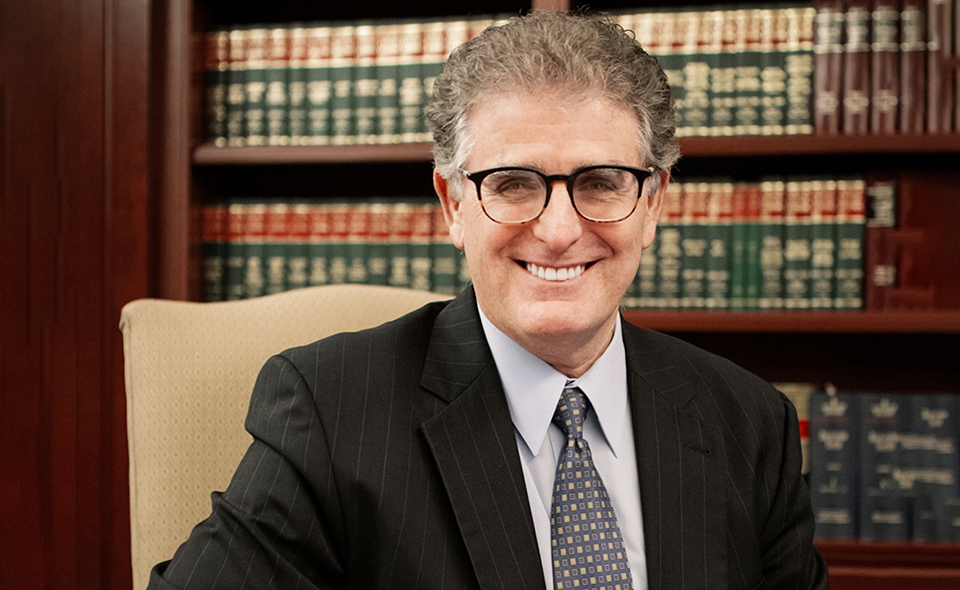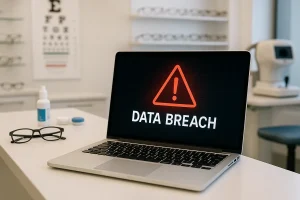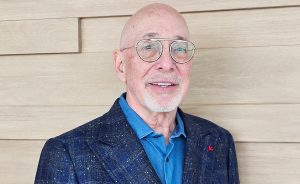Enter Shawn Collins, the ‘environmental lawyer for the people’. In this exclusive interview, Shawn shares a look at the work he does and the clients who come to him, as well a glimpse into the ongoing battle to hold polluters accountable in the US.
My Work and My Clients
I have fought polluters for more than 23 years. My clients are individuals, families, and communities whose air and water have been contaminated by the reckless discharge of dangerous chemicals – usually carcinogens – from factories, industrial parks and landfills.
In my cases, chemicals with names like TCE, PCE, DCE, vinyl chloride, ethylene oxide, arsenic, toluene and glyphosate were poured, spilled, dumped or spewed into the air – often for years – by companies who did not care to spend the money to dispose of the chemicals responsibly or protect those they knew would be exposed. Left to migrate throughout the environment and find their way into homes, schools, churches and parks, these toxins were then inhaled and consumed by residents who had no idea the chemicals were even there, let alone how badly their health was being threatened. No one bothered to tell them. Not the polluter. Not even their government.
The discovery of a toxic chemical in the community frightens residents, understandably, and warns those who might be interested in living there one day to stay away. The contaminated homes – typically the most valuable asset a family owns and hopes one day to leave to the next generation – can be rendered worthless in an instant of discovery. Who wants to live in a home like that? In a place like that? A life of saving and building and caring can be lost.
Parents are terrified to learn that the home they thought was a place of sanctuary and safety for their children is actually quite dangerous, because colourless, odourless industrial chemicals have infiltrated the family's water supply, flowing daily out of the kitchen tap and showerhead. Or they have silently intruded into the home's breathing spaces, having migrated there as the vapour remnants of industrial solvents dumped into the groundwater decades earlier.
I have fought polluters for more than 23 years.
In some cases, far more than ‘just’ the value of a home is lost. Health can be irreparably damaged. People can and do suffer and die, their bodies ravaged by cancer (my cases mostly involve chemicals that cause cancer). The science demonstrates this catastrophic causal chain. What these powerful chemicals do in the factory – for example, kill living microbes in a sterilisation process, or pulverise industrial grease and grime off a new machine being constructed – proves that they have no place in the human body. Who in their right mind would think it acceptable to release such chemicals into the environment in such a way that humans, including especially vulnerable children, would one day breathe them, drink them, or shower in them?
In these cases, I file lawsuits, using the courts and laws to seek justice and compensation for my clients and send a message about how polluters must pay a price for continuing their reckless conduct. Over the last 23 years, my colleagues and I have forced polluters to:
- perform thousands of tests for contamination throughout the community, including tests of the water and air inside homes;
- clean up the soil, air and groundwater they have contaminated;
- supply safe and clean water to communities whose supplies were ruined by contamination;
- pay for the lost property value their industrial operations have caused, and in one community, guarantee the value of the families' homes at their un-contaminated value;
- compensate residents for the anxiety they have caused;
- compensate hundreds of cancer victims who had been exposed for years to a carcinogen discharged for decades from a plant in their community.
Just last year, I was co-counsel on a toxic exposure case where the jury awarded $363 million to my client: a woman who contracted breast cancer after 22 years of unknowing inhalation of a carcinogen released daily from a nearby plant. The case is especially significant because $325 million of the jury's verdict – nearly 90% – was for punitive damages. The jury was clearly outraged by the polluter's decades-long release of the toxic chemical into the plaintiff's residential community and failure to do anything meaningful to protect her from it, or even warn her that her health might be in danger.
Just last year, I was co-counsel on a toxic exposure case where the jury awarded $363 million to my client
Why the Polluters Control Pollution Regulation in the US
Over the last 23 years, I have worked on hundreds of environmental contamination cases. Each one has followed the same enraging script: government regulators knew all along about a company’s reckless disposal of chemicals, threatening its neighbors. But they did not force a cleanup to protect the people or issue warnings so that the people could try to protect themselves.
Why does this happen?
While we have so-called ‘environmental regulation’ in this country, it is mainly controlled by polluters, and by governments far more attentive to the business needs of polluters than to the health and safety of the people. For example:
‘Safe until proven dangerous’
We often do not require proof that a chemical is safe before we allow companies to use it… and so the potential risk of the chemical falls not on the company profiting by its use, but instead on the company's neighbours, who neither know of the danger nor profit from it, but who nonetheless will pay a dear price if the polluter and government have made a bad bet.
Regulators often react only when a toxic chemical has proven unsafe to a community. Of course, when this proof finally shows up, it is usually years after people have been breathing or drinking the chemical and someone notices that there is more cancer than normally expected in that community. But by then, it is too late.
Regulations are conveniently outdated
David Michaels has written a wonderful book about industry dominating government regulation called ‘Doubt is Their Product’. Michaels tells the story of how, while nearly 1,000 people perished in the sinking of the Titanic because the ship did not have enough lifeboats to hold them, the ship's number of lifeboats actually fully complied with existing government regulations. It was just that the regulations had been written years earlier, when ocean-going ships carried far fewer passengers, and had not been updated to protect the far greater number of passengers on a ship so large as the Titanic. In other words, something could be regulatorily compliant and yet still terribly unsafe.
Environmental ‘regulation’ often works just like this. Regulators today determine what are supposedly ‘safe’ concentrations of a carcinogen in air or water, but based on decades-old science that does not take into account all that is currently known about a chemical's dangers. And of course, industry benefits from this because, invariably, the outdated regulations underestimate the danger and allow the polluter to expose people to more of the chemical than appropriately updated science ever would.
Regulators often react only when a toxic chemical has proven unsafe to a community.
Polluters write the science
Billions of dollars ride on environmental regulation. Whether regulators allow industry to contaminate the air to one ‘part per billion’ per cubic metre of a certain carcinogen, or one-tenth of that, can have extraordinary financial consequences for the profits of companies in the industry. A company having to buy and install expensive pollution control equipment or use and emit much less of the chemical than called for in its business plan, in order to meet more stringent air quality requirements, can significantly erode profits.
The pollution industry's response to this is to try to control the outcomes of scientific studies that provide the basis for regulations. And so many of the scientific studies which opine about how safe or unsafe a chemical is, and thus are critical in determining regulations, are actually performed by scientists who are paid pollution industry consultants, or are funded by lobbyists and companies who make money using and selling the chemical that is the subject of the study. This is a blatant conflict of interest. However, as polluters see it, the conclusions of these studies can so greatly impact profits that they cannot be left to the work of independent or public health scientists.
Industry controls the regulatory and law-making processes
Just as they do with the consequences of scientific studies, billions hang in the balance when environmental regulations and laws are made by agencies and legislative bodies, and the pollution industry makes certain that it has a firm grip on each. For example, today, a contested campaign for a United States Senate seat – the holder of which casts important votes about whether or not to enact environmental laws – can cost $100 million or more.
Where does such money come from? Certainly not from the disadvantaged communities with the most to lose from breathing polluted air or drinking polluted water. No, not surprisingly, the money comes from companies who profit by lax, or non-existent, or un-enforced, environmental laws and regulations. That is why the wealthiest polluters in the world, and their PACs and lobbyists, are among the most significant and active campaign contributors to American elections.
Increasing numbness to cancer risk
When I began work as an environmental lawyer in 2000, government health agencies typically would not allow exposure of human beings to concentrations of a carcinogen if they posed a cancer risk of more than one in 1 million. This is called the ‘excess cancer risk’, or ECR. It is a measure of how many excess, or unexpected, cancers in a population of 1 million people would be caused by their exposure to those concentrations.
As polluters see it, the conclusions of these studies can so greatly impact profits that they cannot be left to the work of independent or public health scientists.
Today, however, the government often allows people to be exposed to concentrations that cause 100 excess cancers in 1 million. That is a tolerance for 100 times greater cancer risk. Why? There are several reasons for this, but one certainly is the pollution industry's persistent efforts to influence government to alter health standards in a way that favours industry profitability, such as by allowing more pollution to infiltrate a community without regulatory consequence.
Budget cuts
Environmental laws are only as strong as our willingness to enforce them. American law is filled with civil and criminal laws that empower the government to, for example, force polluters to stop polluting, compel companies to clean up the pollution they caused, and imprison corporate decision makers who knowingly endanger lives. But, despite the fact that our country is inundated with industrial chemicals that can ruin our lives and health, when was the last time any pollution executive was ever convicted and sentenced to prison for breaking environmental laws? And why are the environmental laws and regulations that we do have not enforced with more vigour, or at all?
Over the last few decades, both federal and state governments have stripped environmental regulators of the resources necessary to enforce the law. One extreme example comes from the state of Kansas. When the state announced late last year – years after it first knew – that the groundwater underlying a large Wichita community might be contaminated with industrial chemicals, the state confessed that it had no money to address the problem. Pathetically, it asked for voluntary donations so that it might do so. Kansas had stripped its budget of enforcement resources, either at the behest of its pollution industry or because Kansas was simply unwilling to make a priority of the health of its citizens.
So, if the government is failing us, who can Americans rely on to protect them from environmental contamination? Juries.
Juries Are the True Environmental Regulators in the United States
With pollution and its horrible consequences so dramatically on the rise in the US, I am sometimes asked whether we need tougher anti-pollution laws. My answer has always been: no. We have tough anti-pollution laws on the books right now, both civil and criminal. And regulations, too. We just need to enforce them – really, we need the will to enforce them.
However, as I describe above, in the US today, we have a system of environmental ‘regulation’ that is ever more in the control of the polluters it is supposed to regulate. The bottom line to all of this is that, until further notice, Americans cannot trust their government to define how much of a chemical is dangerous and what a polluter profiting from the use of a dangerous chemical owes to its neighbours whose lives, health and property values are on the line when the polluter discharges chemicals irresponsibly into a neighborhood.
[ymal]
Enter the jury. The US is the only industrialised country in the world that constitutionally guarantees that a jury will decide (many) of its civil trials. In other countries, juries are reserved for criminal trials. In the US, juries decide civil trials because the people who wrote our Constitution, frankly, wanted a forum for resolving important disputes that was as removed as possible from the corrosive, sometimes corrupting, influence of the relationship between business interests and government.
As a result, for example, in my 2022 case where the jury awarded $363 million to a woman who had contracted breast cancer after inhaling for years a chemical released from the defendant's plant, the jury was free to look sceptically upon (and, indeed, to even disregard) the defences that:
- "the company did not behave recklessly in releasing the chemical because local government gave the company a permit to do so." The jury was free to conclude that the company was responsible itself for knowing the dangers of the chemical it unleashed on a residential community and could not blindly rely on the permission of a government regulatory agency that might have been too ignorant or uncaring to know the chemical's true danger.
- "the chemical concentrations inhaled by plaintiff must have been safe because no study has ever shown concentrations so low to cause harm." The jury was free to agree with plaintiff that the defendant's argument was meaningless because no study of the concentrations plaintiff inhaled had ever been performed, and that many of the studies defendant relied upon at trial were not trustworthy, because they had been paid for by money from the pollution industry.
As our Constitution's framers had intended, this jury took seriously its role as the judge of what was necessary to protect a community from a carcinogen. It rejected the conclusion of the polluter and regulator that the community did not deserve any such protection.
The result was a record-setting verdict that reverberated literally around the world, speaking to that defendant and other polluters in the only language they understand: money. In that way, the jury did more than most regulation ever would.
Shawn Collins, Founder
1770 Park St STE 200, Naperville, IL 60563, USA
Tel: +1 630-527-1595
Shawn Collins is the founder of The Collins Law Firm and a prolific trial attorney, with a breadth of experience across the fields of environmental law, personal injury law and business litigation. Since 1986 he has acted on a number of ‘high stakes’ litigation matters to recover tens of millions of dollars for his clients. Shawn’s expertise and leadership have seen him recognised as one of the Top 100 Trial Lawyers by The American Trial Lawyers Association from 2005 through 2023, among many other accolades.
The Collins Law Firm was founded by Shawn Collins in 1992 and has since become one of the leading law firms in the Chicago area. The firm’s team possess expertise in business, personal injury and environmental law, with several attorneys recognised as leading lawyers both regionally and nationally. The Collins Law Firm has represented hundreds of clients and secured more than $900 million in settlements and verdicts.





















